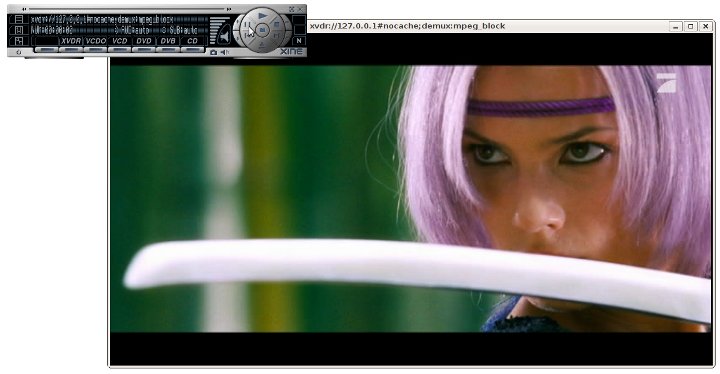VDR1. InstallationPlease note that newer Ubuntu versions might have other version numbers than which are used with following libav* packages. This installation guide was made for Ubuntu 8.10, but should also work with other versions.
sudo apt-get install libavformat52 libavutil49 libavcodec51 libavutil49 libavdevice52
sudo apt-get install libxine1-misc-plugins xine-ui libxine1-all-plugins libxine1-ffmpeg libxine1 libxine1-bin libxine1-x
sudo apt-get install vdr vdr-plugin-xineliboutput libxine1-xvdr
2. Channel configurationIn order to scan all transponders w-scan is required
Ubuntu 9.04 already ships w-scan, older Ubuntu versions need to download and compile it
For Ubuntu 9.04:
apt-get install w-scan
For older Ubuntu Versions:
W-Scan 2008-11-06$ wget http://sundtek.de/support/wscan-20081106.tar.gz
$ tar xvzf wscan-20081106.tar.gz
$ cd w_scan-20081106
$ make
in order to be able to use DVB-C the device needs to be set to DVB-C first, this can be done with the following mediaclient command:
$ /opt/bin/mediaclient -D DVBC
$ ./w_scan -f c > channels.conf.dvbc
newer w_scan version also require a countryflag eg -c UK
$ ./w_scan -f c -c UK > channels.conf.dvbt
To scan DVB-T transponders:
$ /opt/bin/mediaclient -D DVBT
$ ./w_scan -f t > channels.conf.dvbt
newer w_scan version also require a countryflag eg -c UK
$ ./w_scan -f t -c UK > channels.conf.dvbt
To use DVB-T just copy channels.conf.dvbt to /var/lib/vdr/channels.conf
To use DVB-C copy channels.conf.dvbc to /var/lib/vdr/channels.conf
It's only possible to set one devicemode, and you should only copy one of those configurations to /var/lib/vdr, upcoming VDR versions will solve this issue.
After copying the configuration, please restart VDR:
$ sudo /etc/init.d/vdr restart
3. Remote controlWe also created a template for the remote control:
$ sudo cp /opt/doc/sundtek_vdr.conf /var/lib/vdr/remote.conf
further information about how to configure the remote control can be found on following website:
http://www.vdr-wiki.de/wiki/index.php/Remote.confAfter this configuration please restart VDR again.
$ sudo /etc/init.d/vdr restart
4. Using VDRThe remote control shall work automatically if you have followed the LIRC documentation.
For DVB-T:
$ sudo /etc/init.d/vdr stop
$ sudo cp channels.conf.dvbt /var/lib/vdr/channels.conf
$ /opt/bin/mediaclient -D DVBT
$ sudo /etc/init.d/vdr start
$ xine
For DVB-C:
$ sudo /etc/init.d/vdr stop
$ sudo cp channels.conf.dvbc /var/lib/vdr/channels.conf
$ /opt/bin/mediaclient -D DVBC
$ sudo /etc/init.d/vdr start
$ xine
Start Xine:
Ubuntu Menu, Applications -> Sound & Video -> Xine and finally select XVDR in the xine menu
 FAQ
FAQ* Audio is muted
there could be 2 reasons for muted audio:
1. Codecs aren't installed correctly, pleae install libxine1-misc-plugins for linux (eg. under ubuntu)
2. Audio is muted, this can also be caused by the xine/pulseaudio plugin, please add following line to your xine configuration:
/home/<username>/.xine/config
Code:
audio.pulseaudio_device:pulseaudio
* Xorg crashes or hardlocks
This error can be caused by Xine and the ATI drivers
As a workaround you can switch the Xine output to use Xshm which is more reliable - but decreases the quality of the OSD menu
/home/<username>/.xine/config
Code:
video.driver:xshm